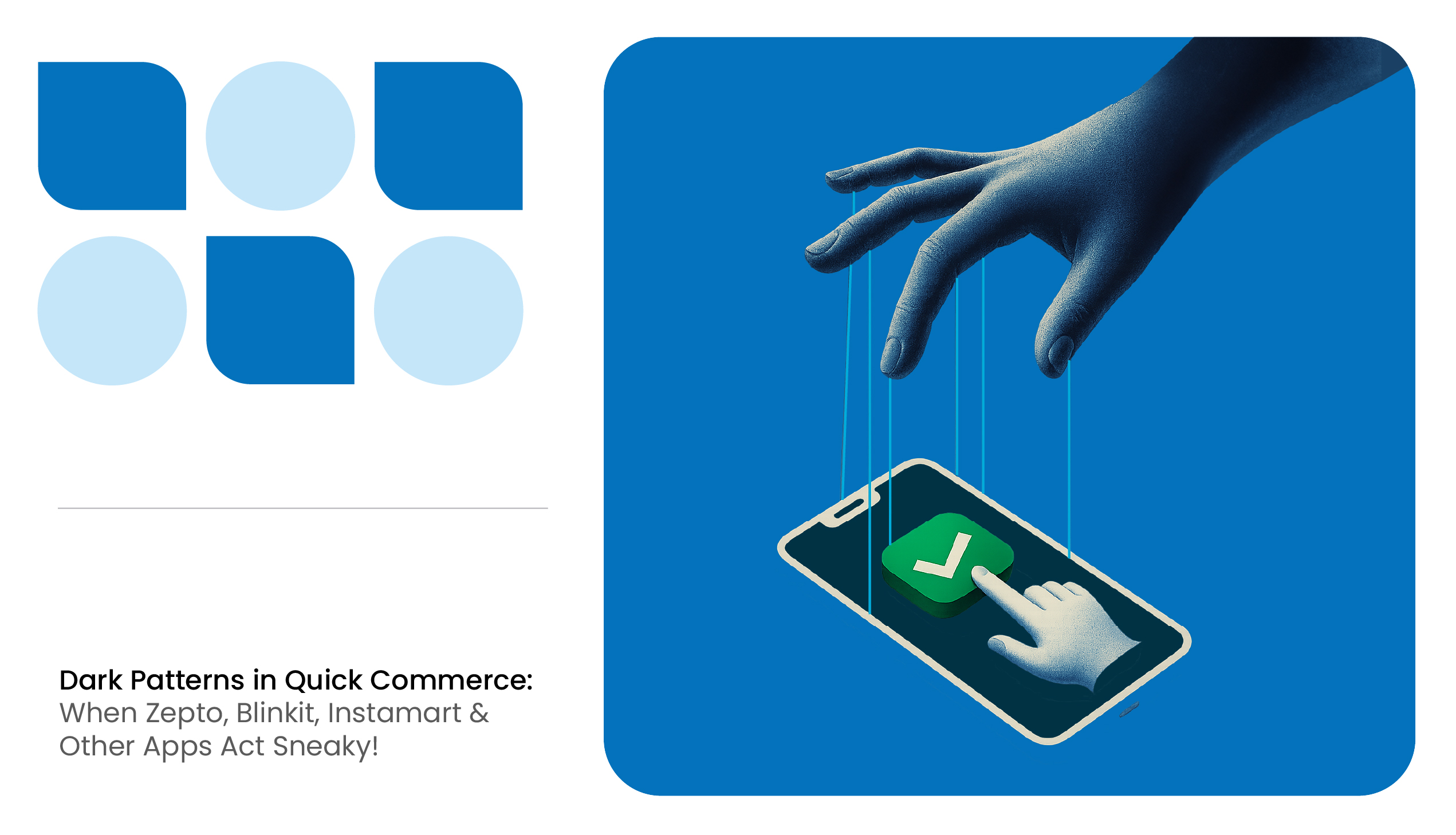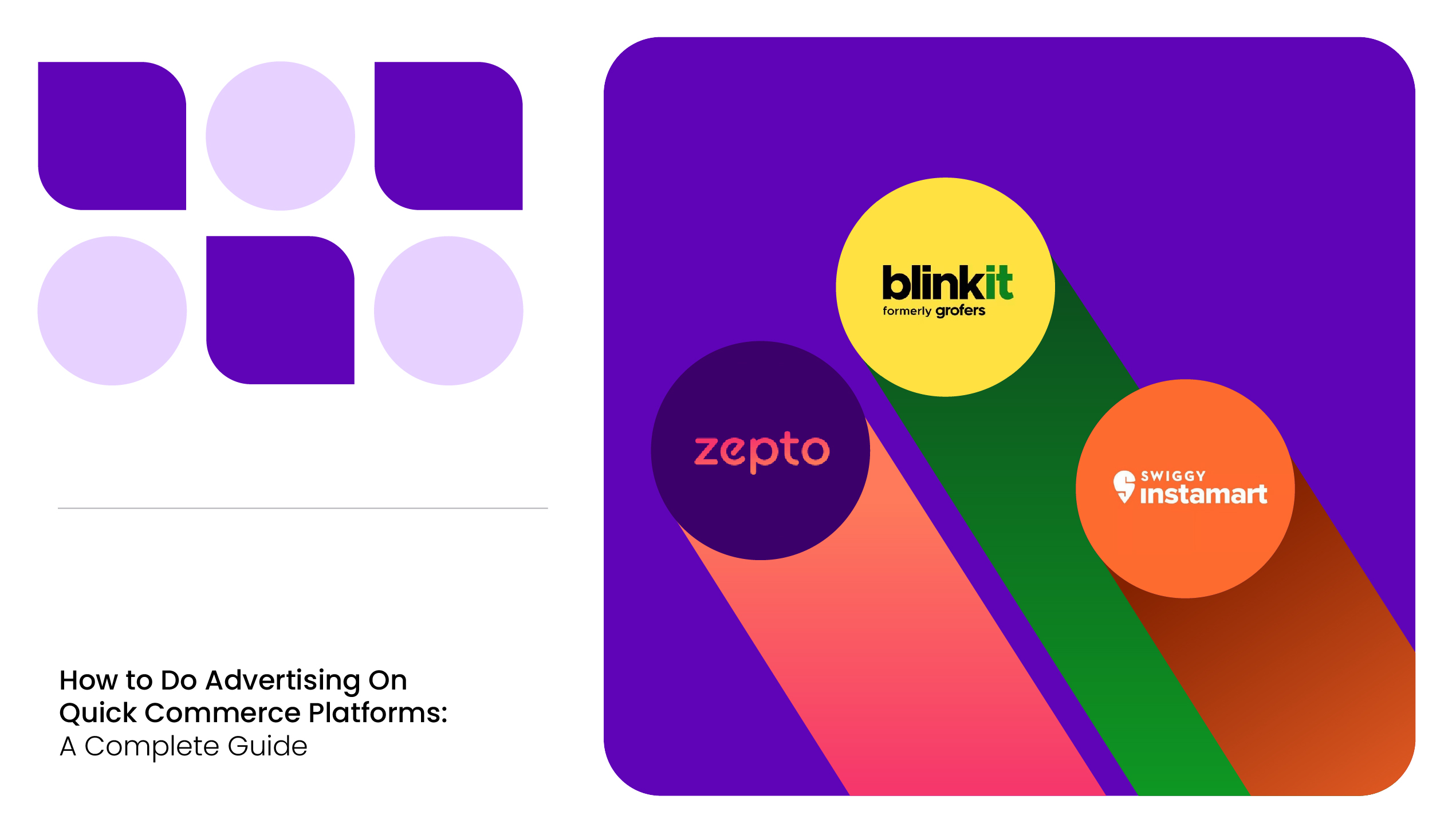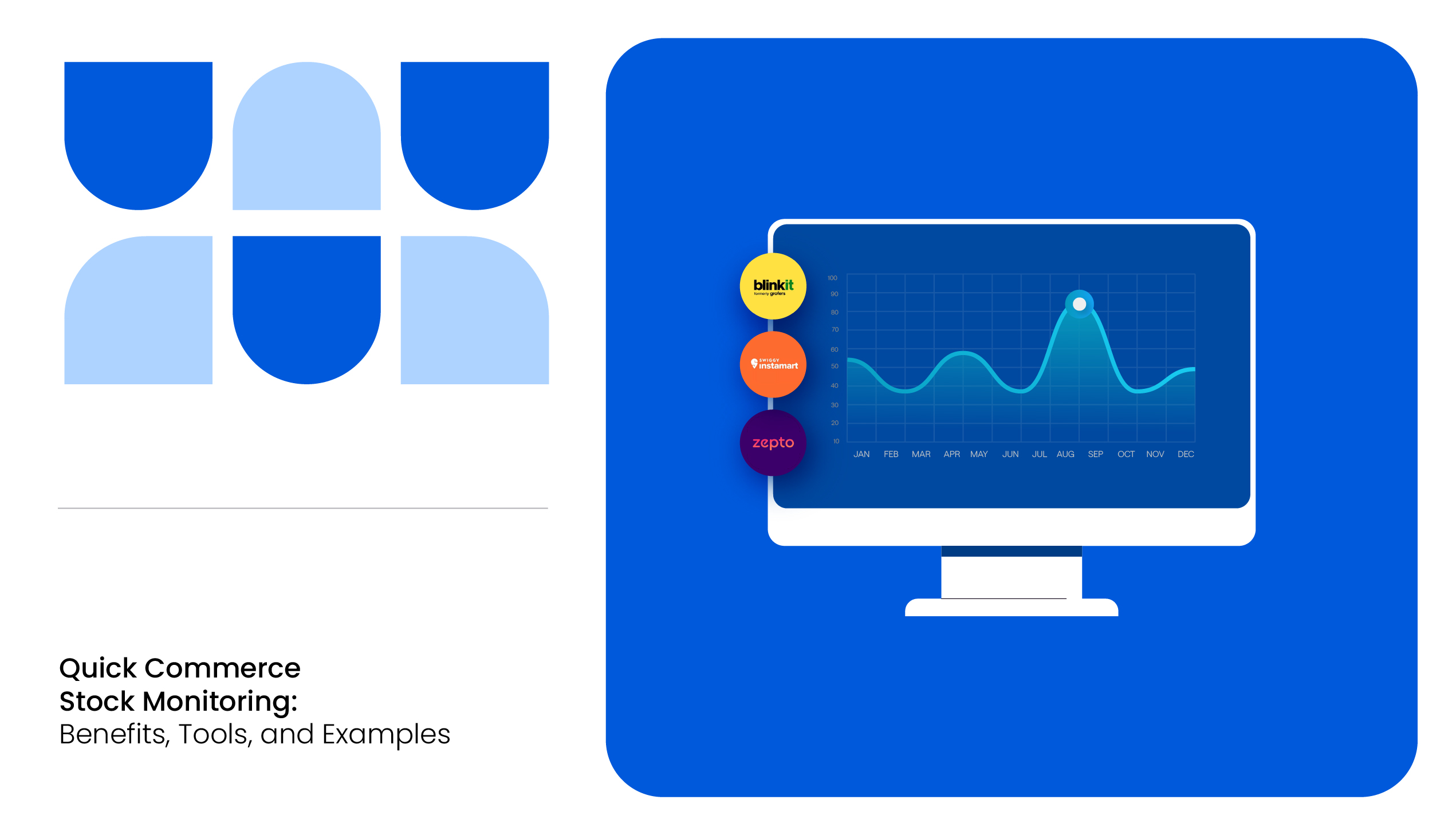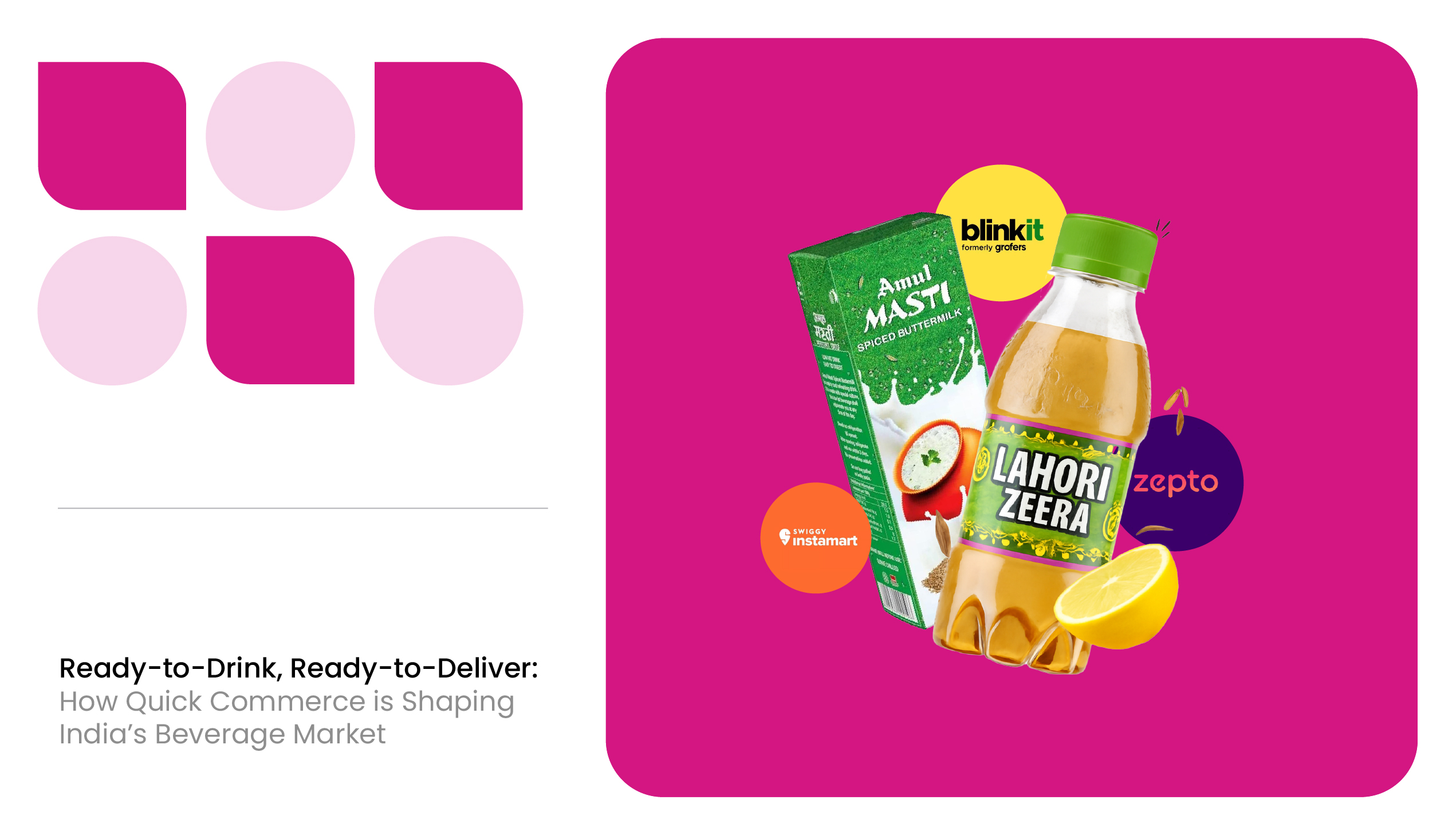Imagine opening Zepto on your iPhone, adding groceries to your cart, and the total shows ₹600. Your friend does the exact same on their Android, and their total is only ₹520. Same items, different prices, all because of the device. You didn’t notice, and you ended up paying more
You just got tricked into spending more by dark patterns in quick commerce!
We’ve all been there, done that! Let’s explore what dark patterns are, how they play in instant delivery apps, why they work, their impact on consumers and brands, regulatory frameworks, and why ethical design practices are key for sustainable growth.
What Are Dark Patterns in Quick Commerce?
Dark patterns are intentional UX/UI strategies designed into the app experience to manipulate consumer behavior, often without users’ conscious awareness. Unlike traditional advertising, these manipulations are woven into the shopping journey, making them subtle but highly effective.
In the quick commerce ecosystem, these patterns thrive because speed and convenience dominate the user experience. Users are encouraged to make fast decisions, making them more susceptible to subtle manipulations.
Dark patterns in quick commerce marketing are designed to exploit common human behaviors and cognitive biases. Whether it’s a subtle upsell sneaking into your cart or hidden fees appearing at checkout, these tactics aim to increase sales, boost subscription numbers, and maximize the average order value, all while the user believes they are making autonomous decisions.
Why Do Dark Patterns Work in Quick Commerce?
Here are some key behavioral principles behind why:
- Time Pressure and Urgency: Quick commerce revolves around instant gratification. Countdown timers and flash deals create artificial urgency. Users make snap decisions under pressure, often ignoring rational considerations such as necessity or total cost.
- Cognitive Load Reduction: The mental energy required to process information during fast transactions is limited. Pre-selected add-ons, hidden charges, and auto-enrollment in subscriptions take advantage of this cognitive load, subtly influencing spending.
- Loss Aversion and FOMO: Humans are psychologically wired to avoid losses and fear missing out. Scarcity cues, such as “only 2 items left” or confirm-shaming messages, exploit this bias, nudging users into making quick purchases.
- Commitment and Inertia: Once a user begins checkout, they feel psychologically invested. Hidden fees or additional products exploit this commitment, encouraging completion of purchases even when conditions change unexpectedly.
- Trust Exploitation: Well-known platforms benefit from pre-established trust. Users assume reliability and fairness, making subtle manipulations less likely to be questioned.
- Integrated Marketing: Dark patterns are no longer isolated UI tricks; they are increasingly part of quick commerce marketing, shaping the entire consumer journey, from discovery to checkout. This ensures that manipulation occurs at multiple touchpoints, reinforcing spending behavior.
READ MORE | Looking for the best quick commerce monitoring tools? Check out the 5 Best Quick Commerce Monitoring Tools for Indian Markets.
Common Dark Patterns in Quick Commerce Apps
The most illustrative way to understand instant delivery app dark patterns is to look at examples you might have already experienced. Below are the most common tactics used by quick commerce platforms in India:
1. Basket Sneaking
Let’s say you’re ordering a packet of Tata Salt on BigBasket, but when you reach checkout, you see a premium organic salt added to your cart without you selecting it. Suddenly, your ₹50 salt order has jumped to ₹90 because of a product sneakily added.
That’s basket sneaking. This is when items like upsells, premium versions, or complementary products get added to your cart automatically without your knowledge.
When users are in a rush, especially on quick commerce apps like BigBasket, Zepto, or Swiggy Instamart, they might not always check their cart thoroughly before heading to checkout. Apps take advantage of that by sneaking in extra items that increase the total cost, and since they’re already committed to buying, they’re likely to proceed with the purchase.
And, sometimes sneaked items are free, like this (un)fortunate man from Bengaluru who got free tomatoes in his Instamart order, but at the cost of consumer choice!
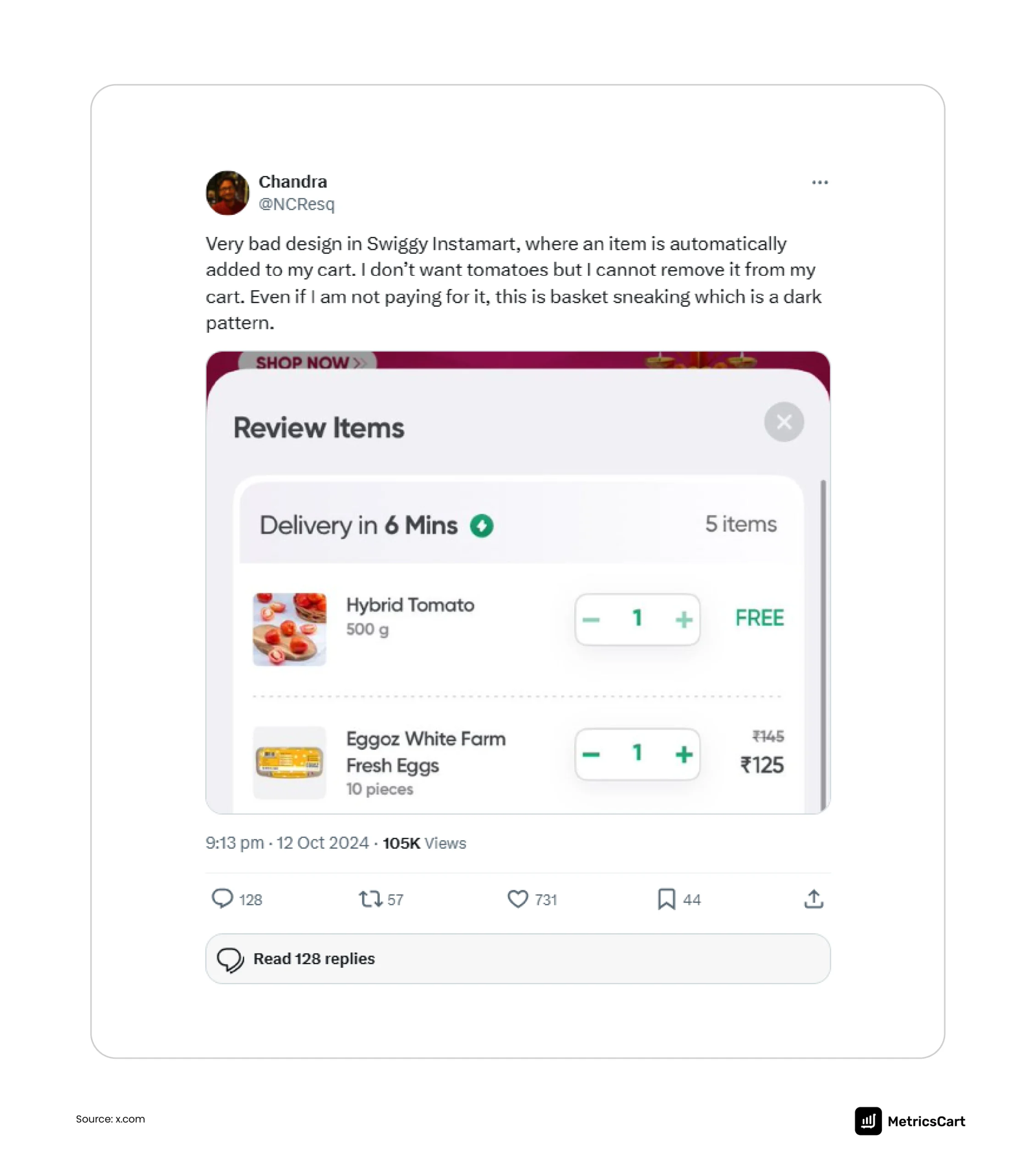
2. Confirm Shaming
You are shopping on Zepto, but you’re about to close the app because you’ve decided not to order. However, a pop-up appears: “Are you sure you don’t want to avail free delivery today?” or “Don’t miss out on a 20% discount, it’s a limited-time offer!” Suddenly, you feel like you should go ahead with the purchase to avoid missing out, even though you didn’t intend to buy anything in the first place.
Confirm shaming is when you try to exit or avoid an offer, but the app makes you feel guilty for not completing the action. It’s a psychological tactic where you’re made to feel like you’re making a mistake or missing out.
When apps use guilt-driven messages like “Don’t leave without saving 10%!” or “Are you sure you want to miss this offer?” they’re playing on your fear of missing out (FOMO). It pressures you into completing a purchase or confirming a decision, even when you might have wanted to cancel.
3. Forced Continuity
Have you ever signed up for a free trial, only to find that you’re automatically charged after the trial period ends? That’s forced continuity, a tactic where free trials or promotional offers convert into paid subscriptions without clear reminders.
Consumers are attracted to free offers, but once the trial ends, they are automatically charged. The auto-renewal clauses are often buried deep in the fine print, and by the time the charge hits, most users either forget to cancel or don’t bother.
Swiggy ONE offers users free deliveries for 3 months at a minimal cost, such as ₹30. However, after the trial ends, the renewal amount for the subscription service gets added automatically to your next order. If you forget to cancel or don’t realize you need to, you end up paying for a service you didn’t intend to keep.
4. Bait and Switch
Let’s say on Blinkit, you might see a ₹500 bottle of shampoo. But when you click to add, you find that the item is out of stock. You’re then shown a more expensive option for ₹600. This switch makes it harder to walk away, especially after investing time in finding the product.
The bait (a great price) hooks the user, and once they’ve clicked, they’re shown a different product. Since they’re already committed and have invested time, they’re more likely to go with the new (often pricier) option.
Zepto’s “free cash” is a classic example! Consumers get baited with “₹100 added to your Zepto wallet” and go ahead adding items to the cart, only to never see the “free cash” when checking out.
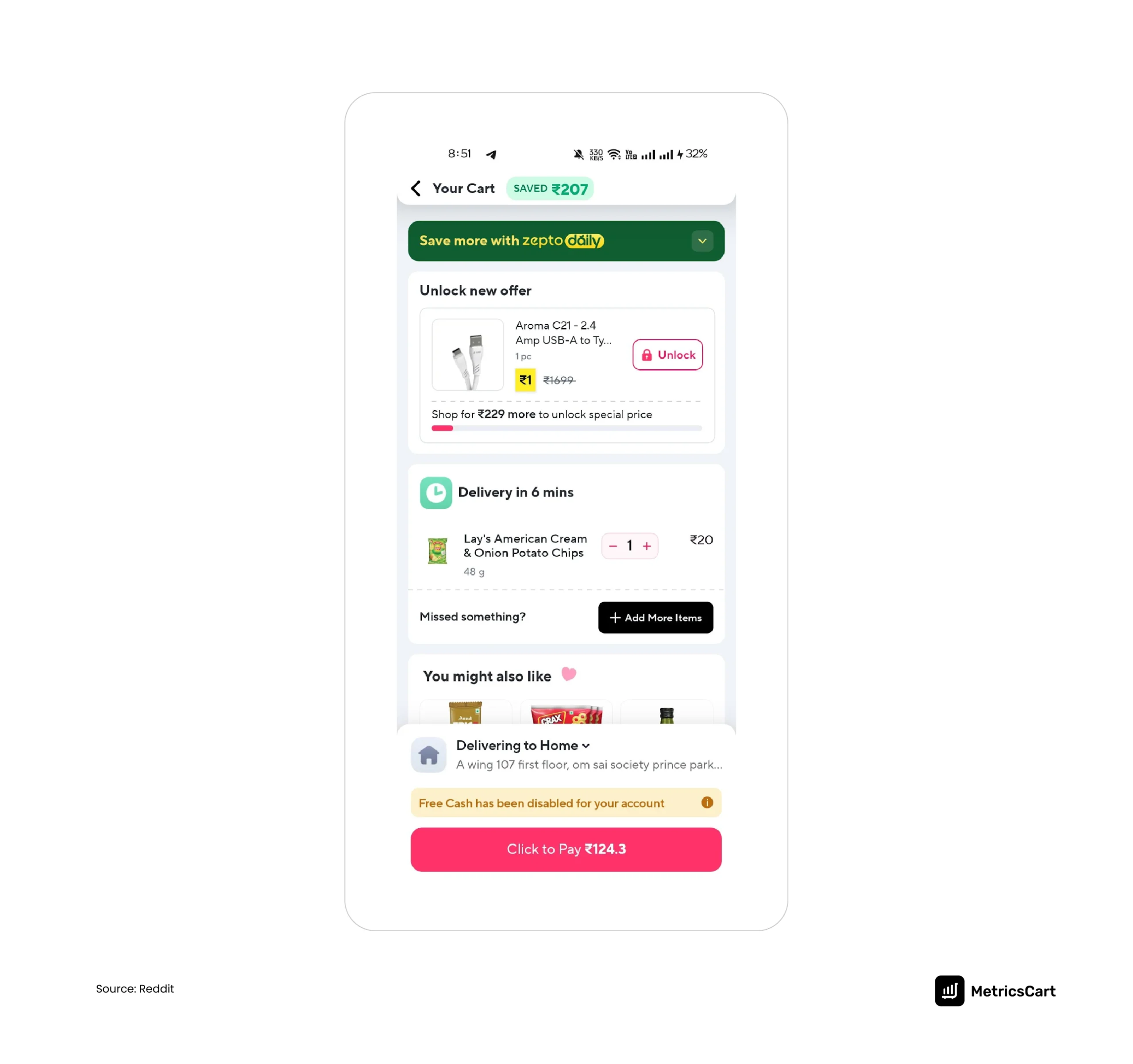
5. Hidden Fees and Charges
Your items in the cart total to ₹220, but when checking out, the amount payable turns out to be ₹325! Thanks to a long list of delivery fees, surge charges, handling fees, and GST.
Hidden fees are charges that aren’t disclosed until the final stages of checkout. These could include delivery fees, handling costs, or service charges.
One reason why consumers fall for this is that they’re invested in the process. Consumers are already mentally committed to the purchase, so the added costs are an inconvenience that they end up overlooking for the convenience of quicker deliveries.
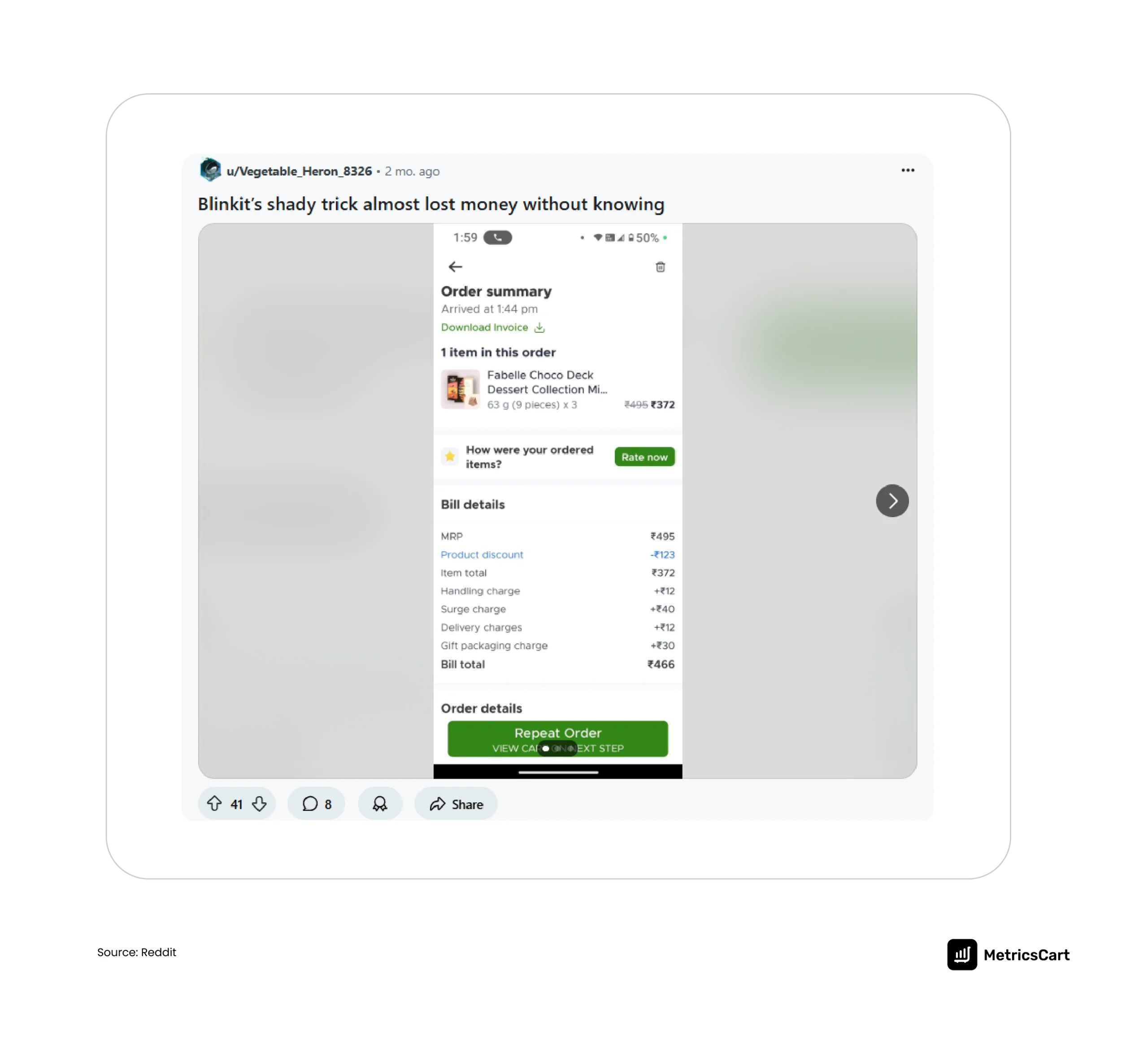
READ MORE | Wondering how to kick-start your quick commerce journey? Check out Quick Commerce Unpacked: The Future of Fast, On-Demand Shopping.
6. Urgency and Scarcity Cues
When shopping for a last-minute grocery item, you may see a message saying, “Only 2 left at this price!” or “Offer ends in 10 minutes!” The time crunch nudges you to complete the purchase quickly, even if you weren’t planning on buying the product in the first place.
Urgency and scarcity cues make us act quickly, often before we have time to consider whether we really need the product. The pressure of potentially missing out encourages consumers to act hastily.
These cues create a sense of urgency, pushing consumers to make fast decisions and complete purchases without thinking twice.
7. Pricing Discrepancies (Android vs. iOS)
A Bengaluru-based entrepreneur experimented by comparing prices on Zepto using an iPhone and an Android device. She discovered significant price disparities for the same grocery items:
- 500 grams of grapes were priced at ₹65 on Android but ₹146 on iPhone.
- Capsicum was listed at ₹37 on Android and ₹69 on iPhone.
This pricing bias is one of the most common dark patterns in quick commerce apps that has been a controversial debate among users.
Some consumers lashed out, dubbing it the Apple Tax, while others attributed it to dynamic pricing algorithms that may adjust prices based on user demographics, including device type.
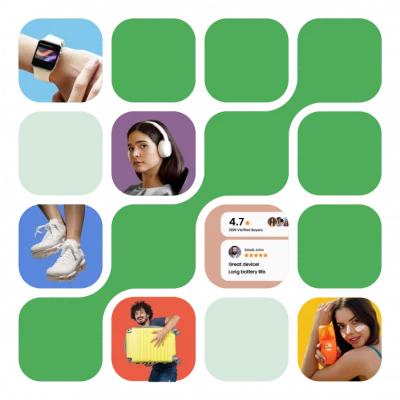
Do Dark Patterns Really Pay Off?
While dark patterns in quick commerce marketing may generate short-term revenue, the benefits are mostly skewed toward the platforms rather than the brands themselves.
For instance, a grocery item priced higher on an iPhone versus Android may boost the platform’s margin, but the brand selling that product often sees no additional revenue and may even suffer reputational harm if consumers feel misled.
News reports on Zepto, Instamart, and other apps highlight that consumers encounter these manipulative tactics, eroding trust in both the platform and, indirectly, the brands whose products are sold. In 2024, apps like Zepto and Blinkit were flagged following complaints from local retailers related to predatory pricing and anti-competitive practices.
Regulatory scrutiny from the Central Consumer Protection Authority further underscores the risks, as platforms face legal action for employing dark patterns.
In essence, while platforms might enjoy short-term financial gains, brands gain little and risk long-term damage to consumer perception, making ethical, transparent design a far more sustainable approach for both parties in India’s quick commerce ecosystem.
READ MORE | RTD brands are riding the quick commerce wave in India! Check out Ready-to-Drink, Ready-to-Deliver: How Quick Commerce is Shaping India’s Beverage Market.
Government Regulations to Curb Dark Patterns
Recognizing the detrimental impact of dark patterns in quick commerce, the Indian government has implemented comprehensive measures to safeguard digital consumers.
Under the Consumer Protection Act, 2019, the Central Consumer Protection Authority (CCPA) issued the Guidelines for Prevention and Regulation of Dark Patterns, 2023, which came into effect on November 30, 2023.
These guidelines identify 13 specific dark patterns, including false urgency, basket sneaking, confirm shaming, forced action, bait-and-switch, drip pricing, nagging, trick wording, interface interference, disguised ads, and rogue malware.
To reinforce these guidelines, the CCPA issued an Advisory on June 5, 2025, directing all e-commerce platforms to:
- Conduct self-audits within three months to identify and eliminate dark patterns.
- Implement corrective measures to ensure compliance with the guidelines.
- Submit self-declarations confirming the absence of dark patterns on their platforms.
The Future of Quick Commerce: A Call for Ethical Design
Dark patterns in quick commerce apps might nudge consumers to buy more or click faster, but the cost is invisible: lost trust, frustrated users, and weakened credibility.
For FMCG brands, being associated with platforms that use manipulative tactics can quietly erode consumer loyalty. For consumers, it means paying more than intended, making choices they didn’t actively decide.
Ethical design flips the script. Transparent pricing, honest promotions, and user-centric interfaces don’t just protect consumers; they protect brands and platforms from backlash, regulatory penalties, and long-term disengagement.
In India’s quick commerce ecosystem, where consumer choice is abundant and switching apps is easy, platforms and brands that commit to clarity, fairness, and respect for the user will stand out. Convenience will remain the headline, but trust, transparency, and ethical design will be the true differentiators.
Today, FMCG brands need clarity more than ever. With MetricsCart, make quick commerce data work for you. Get real-time insights for Zepto, Blinkit, and Swiggy Instamart with our quick commerce dashboards to stay ahead of the curve.
Ready to Boost Your FMCG Brand Across Zepto, Blinkit & Instamart?
FAQs
Pay attention to your cart and checkout screens, watch out for pre-selected items, hidden fees, and countdown timers creating false urgency. Compare the total across devices if possible, read the fine print on promotions, and pause before confirming a purchase. Being aware is your first line of defense against manipulative UX tactics.
Quick commerce platforms may employ dark patterns, such as device-based pricing discrepancies, urgency cues, and basket sneaking, to subtly influence spending. While not every app does this, research and consumer surveys in India show a significant percentage of users encounter manipulative tactics that can increase basket size and revenue.
Dark patterns undermine informed consent, tricking users into purchases or subscriptions they didn’t intend. For FMCG brands, association with platforms that employ these tactics can erode trust and loyalty. Ethically, leveraging cognitive biases to increase short-term sales compromises transparency and damages long-term brand credibility.
The sector faces hyper-competition, low switching costs, pricing transparency issues, and regulatory scrutiny. Platforms are under pressure to deliver ultra-fast while keeping costs and UX optimal. Dark patterns sometimes creep in as shortcuts to increase conversions, but they risk alienating consumers and attracting government intervention.
Brands can insist on transparent pricing, clear promotion terms, and ethical placement of products on quick commerce apps. Regularly monitoring pricing and auditing promotions with real-time dashboards like MetricsCart can help brands safeguard their value and consumer perception.

